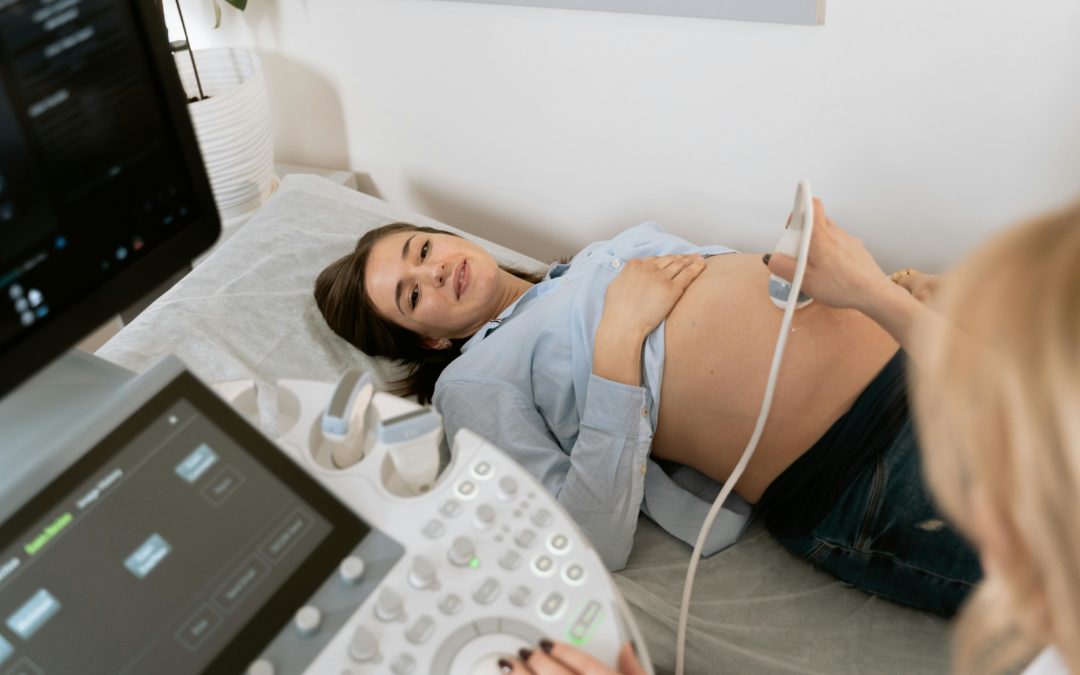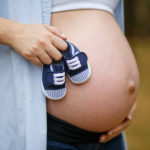A breech pregnancy happens when the baby is positioned bottom or feet first in the uterus. The ideal position for the baby is positioned in such a way that the head is delivered foremost during a vaginal birth. But sometimes the head turns the other way and this condition is called the breech position.
What Is Breech Pregnancy?
A breech pregnancy is when the baby’s feet are positioned first in the uterus when the delivery is about to happen. Baby’s head is up closest to the mom’s chest and the bottom is closest to her vagina.
Most of the time, babies move naturally down so that their head is positioned to come out first. But breech babies will have their position and vice versa. Breech position is common in early pregnancy and most of the babies will move to the head first position by 36 weeks of pregnancy. The head’s first position is called a vertex and it is the safest position for childbirth.
But in a few cases, the baby will not move into a head-first position before 37 weeks. Breech babies are accountable for about 3 to 4% of a full-term pregnancy.
There can be various types of pregnancy as follows.
- The baby’s buttocks are positioned at the vaginal canal with the legs straight up in front of the body and feet near the head. This is called Frank breech.
- The complete breech is when the baby’s buttocks are downwards with flexed hips and knees.
- When the baby’s feet are pointed downwards and will deliver first before the rest of the body. This is called a footling breech.
- The baby is positioned horizontally instead of a vertical position across the uterus. This makes the shoulder enter first during the birth.
Also Read: Pregnancy Diet That You Should Follow
How to Know If a Baby is in Breech Position?
Knowing the position of the baby whether it is in a normal position or breech position can be identified by the mom to a certain extent.
The kicks and lumps of the baby might indicate whether the baby is in a breech position or not. Sometimes with your past pregnancy history, you may be able to tell if the baby is in a breech position. The health care provider may be able to tell which position your baby is facing by placing the hands at a certain position on your tummy. Most commonly an ultrasound is performed by the healthcare provider regarding the movement of the baby and they will find out if it is in a breech position.
What Is the Reason for Baby Remaining in Breech Position?
The fact that the baby is in breech is not always known but still, some factors contribute to this position. They are as follows
- Women who are expecting twins or multiples may have babies in breech.
- Since there are multiple babies it is difficult for them to get into the right position.
- If there is little or too much amniotic fluid, then the baby might get into the breech position.
- If the uterus is not in a normal position or shape, when there is abnormal growth such as fibroids, the babies get the breech position.
- The uterus is shaped like an upside-down pear, but sometimes if it is shaped differently there may not be enough room for the full-grown baby to accommodate and move to a certain position.
- The placenta covers part or all of the cervix and this is called placenta previa. This means that the gestation is less than 37 weeks and the head movements may not have been positioned properly. Hence the birth of the baby is not proper since the head is not down.
Also Read: Tips To Stay Healthy In Your Pregnancy
What Complications Can Occur in Breech Pregnancy?
There are a few complications of having a breech baby but it is not known until the delivery since anytime the position of the baby can change. Sometimes the delivery can be safe even if the baby is in a breech position through the vaginal position.
A few risks of attempting a vaginal birth for the breech position are
- Injuries might happen to the baby’s arms or legs and they may be dislocated or bones might be broken.
- Problems might occur in the umbilical cord. It may get flattened or twisted during the time of delivery. This might lead to some nerve or brain damage due to lack of oxygen for the baby.
Is It Possible To Turn a Breech Pregnancy?
A few home methods are tried out by the mom, but there is no scientific evidence as such for them to work.
- The bridge position is when the women lie on the floor with their legs bent and their feet flat on the ground. The hips are raised and the pelvis is kept as a bridge. You can hold this for 10 to 15 minutes during the day.
- Try our child pose where you can pose like a child for 10 to 15 minutes. It will help the pelvic muscles and the uterus to relax. Make sure you rock back and forth on your hands and knees. Make a circle with the pelvis to promote this activity.
- You can try placing your headphones near your uterus for the baby to move position.
- Placing something cold at the stomach where the baby’s head is placed. Now place something warm at the bottom to encourage the baby’s movements.
- Webster technique or chiropractic technique that will help the uterus to relax.
- Sometimes you can try acupuncture techniques that are done by a health provider.
Conclusion
Breech position is not always a condition to be worried about. If the baby is in breech position by the end of pregnancy you may have to undergo a procedure called ECV. But when you go into labor, it is safe to get delivered to the hospital with the support of your care provider. The staff will help you with the breech births and enable you for a cesarean in case of emergency. The midwife will also be able to extend their support during childbirth in the hospital and after your discharge.
More Blogs To Read
7 Pregnancy Tips To Consider For An Expecting Mom
Tips To Make Your Pregnancy Easier And Even More Beautiful
5 most useful things to be done during pregnancy!!
Top 19 Symptoms of Baby Boy During Pregnancy
Top 20 Symptoms of Baby Girl During Pregnancy
- Understanding Your Baby’s Cry: A Parent’s Mini Guide - June 23, 2025
- Bottle vs. Breastfeeding: What Works for You and Your Baby - June 18, 2025
- 10 Yoga Poses For Kids at Home: Benefits Of Yoga For Kids - June 12, 2025
- Parenting Guide to Child Development: Key Milestones from Birth to 10 Years - June 4, 2025
- Summer Vacation Plans Ideas with Kids - May 27, 2025
- Nutritious Dried Fruit Treats for Toddlers (16–24 Months) - May 25, 2025
- Importance of Screen Time Management for Kids - May 24, 2025
- The 6 Most Common Pregnancy Concerns First-Time Moms Have - May 23, 2025
- Top 10+ Summer Activities for Kids - May 15, 2025
- Busy Family Tips for Raising Healthy Smiles - May 2, 2025














